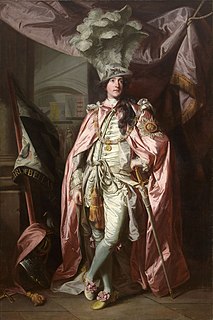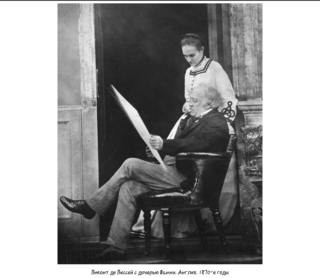Related Research Articles

James Bruce, 8th Earl of Elgin and 12th Earl of Kincardine, was a British colonial administrator and diplomat. He served as Governor of Jamaica (1842–1846), Governor General of the Province of Canada (1847–1854), and Viceroy of India (1862–1863). In 1857, he was appointed High Commissioner and Plenipotentiary in China and the Far East to assist in the process of opening up China and Japan to Western trade. In 1860, during the Second Opium War in China, he ordered the destruction of the Old Summer Palace in Beijing, an architectural wonder with immeasurable collections of artworks and historic antiques, inflicting incalculable loss of cultural heritage. Subsequently, he compelled the Qing dynasty to sign the Convention of Peking, adding Kowloon Peninsula to the British crown colony of Hong Kong.

Earl of Elgin is a title in the Peerage of Scotland, created in 1633 for Thomas Bruce, 3rd Lord Kinloss. He was later created Baron Bruce, of Whorlton in the County of York, in the Peerage of England on 30 July 1641. The Earl of Elgin is the hereditary Clan Chief of Clan Bruce.

The title Earl of Kincardine was created in 1647 in the Peerage of Scotland for Edward Bruce, grandson of George Bruce of Carnock, who was the elder brother of the 1st Lord Kinloss, him in turn being the father of the 1st Earl of Elgin.

Lord Kinloss is a title in the Peerage of Scotland. It was created in 1602 for Edward Bruce, later Master of the Rolls, with remainder to his heirs and assigns whatsoever. In 1604 he was also made Lord Bruce of Kinloss, with remainder to his heirs male, and in 1608 Lord Bruce of Kinloss, with remainder to any of his heirs. He was succeeded by his son, the second Lord, who was killed in a duel in 1613.
Lord Belhaven and Stenton, of the County of Haddington, is a Lordship of Parliament in the Peerage of Scotland. It was created in 1647 for Sir John Hamilton, 2nd Baronet, with remainder to his heirs male.

David Murray, 2nd Earl of Mansfield, 7th Viscount of Stormont,, known as the (7th) Viscount of Stormont from 1748 to 1793, was a British politician. He succeeded to both the Mansfield and Stormont lines of the Murray family, inheriting two titles and two fortunes.

William de Berkeley, 1st Marquess of Berkeley was an English peer, given the epithet "The Waste-All" by the family biographer and steward John Smyth of Nibley. He was buried at "St. Augustine's Friars, London" according to one source, but most likely in the Berkeley family foundation of St Augustine's Abbey, Bristol.

Colonel William Montagu, 5th Duke of Manchester, styled Viscount Mandeville until 1788, was a British peer, soldier, colonial administrator and politician. He was Governor of Jamaica from 1808 to 1827, and Manchester Parish was named after him.

James Cecil, 1st Marquess of Salisbury,, styled Viscount Cranborne until 1780 and known as The Earl of Salisbury between 1780 and 1789, was a British nobleman and politician.

Charles Bruce, 5th Earl of Elgin and 9th Earl of Kincardine was the son of William Bruce, 8th Earl of Kincardine. His mother was Janet Roberton, daughter of James Roberton and great-granddaughter of advocate and judge Lord Bedlay

William Cecil, 2nd Earl of Exeter,, known as the third Lord Burghley from 1605 to 1623, was an English nobleman, politician, and peer.

Earl of Bellomont, in the Kingdom of Ireland, was a title that was created three times in the Peerage of Ireland. The first creation came on 9 December 1680 when Charles Kirkhoven, 1st Baron Wotton, was made Earl of Bellomont. He had already been created Baron Wotton, of Wotton in the County of Kent, in the Peerage of England on 31 August 1650. He was childless and both titles became extinct on his death in 1683.

Thomas Villiers, 2nd Earl of Clarendon, known as Lord Hyde from 1776 to 1786, was a British peer and Tory Member of Parliament from the Villiers family.

There have been four baronetcies created for persons with the surname Bruce, two in the Baronetage of Nova Scotia and two in the Baronetage of the United Kingdom. Two of the creations are extant as of 2010.

Lieutenant-Colonel Thomas Vesey, 3rd Viscount de Vesci and 4th Baron Knapton, was an Anglo-Irish peer and Conservative politician.

Charles Bruce, 3rd Earl of Ailesburyand 4th Earl of Elgin, of Ampthill, Bedfordshire and Savernake Park, Wiltshire, styled Viscount Bruce of Ampthill from 1685 to 1741, was a British landowner and Tory politician who sat in the English and British House of Commons from 1705 until 1711 when he was raised to the peerage as one of Harley's Dozen and sat in the House of Lords.
James Drummond, 1st Baron Perth was a Scottish soldier, landowner and peer.
Lady Agnes Stewart was a Scottish noble. She was born the illegitimate daughter of James Stewart, 1st Earl of Buchan and Margaret Murray. On 31 October 1552 she was legitimized, confirmed by Queen Mary of Guise under the Great Seal of Scotland.

Martha Bruce, Countess of Elgin and Kincardine, born Martha White and known for most of her life as Lady Elgin, was the wife of Charles Bruce, 5th Earl of Elgin and 9th Earl of Kincardine, mother of the collector Thomas Bruce, 7th Earl of Elgin, and governess to Princess Charlotte of Wales, daughter of the future King George IV, at the time second in line to the throne.
James Bruce (1769–1798) was a Member of Parliament for Marlborough in the Parliament of Great Britain from 1796 until 1797.
References
- ↑ John Birnie; William Barclay Turnbull (1838). Families of Broomhill. Edinburgh Printing Co. pp. 36–37. Retrieved 31 December 2010.
- ↑ Lundy, Darryl. "Archibald Roberton". thepeerage.com. Retrieved 1 January 2011.[ unreliable source ]
- 1 2 3 4 "Kincardine,Earl of (S,1647)". Cracroft’s Peerage. Archived from the original on 16 March 2012. Retrieved 1 January 2011.
- ↑ Lundy, Darryl. "William Bruce, 8th Earl of Kincardine". thepeerage.com. Retrieved 1 January 2011.[ unreliable source ]
- ↑ John Debrett (1816). The peerage of the United Kingdom of Great Britain & Ireland. F.C. and J. Rivington. pp. 708–. Retrieved 1 January 2011.